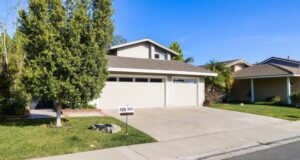Revised LEED Demand Response Credit Requirements Promote Automated Demand Response in LEED building
Pilot credit encourages LEED building projects to become active players in the emerging smart grid
Washington, DC – June 20, 2011 – (RealEstateRama) — The U.S. Green Building Council (USGBC) today announced the release of the comprehensively updated LEED Demand Response Pilot Credit. Originally launched in 2010, the revised and enhanced Demand Response Pilot Credit establishes guidelines that are anticipated to increase participation in automated demand response programs. Leading industry experts from the Demand Response Research Center at Lawrence Berkeley National Lab (LBNL), Schneider Electric and Skipping Stone contributed to the development of the credit.
LEED projects that satisfy the credit by demonstrating their ability to shift energy consumption during peak events by 10 percent of peak load demand will earn a point towards LEED certification when they participate in existing utility-sponsored demand response programs that meet guidelines established in the pilot credit. Additional points are available for projects that implement semi or fully automated demand response programs in their buildings.
“By forming a team leveraging the demand response research from LBNL, energy market expertise from Skipping Stone and our own diverse and deep experience with buildings, we believe this credit will really make a difference in the overall smart grid adoption by the commercial sector,” said Jim Anderson, vice president USA Utility and Smart Grid Business for Schneider Electric.
USGBC is currently finalizing plans for the implementation of a concentrated market test of the Demand Response Pilot Credit. The market pilot test will be launched in select utility territories to promote the new the credit and spark widespread adoption of demand response within the building community. The program will also include an education and market feedback mechanism to foster knowledge-sharing and measure the impact the building community can have on the grid and the environment. The pilot test is currently being developed as a partnership leveraging stakeholder support through utilities and demand response program providers, enabling technology companies and companies that service the building and energy communities.
“Demand response is unique,” said Mark MacCracken, Chairman of Board of USGBC. “To achieve success, this LEED credit requires coordination between the building community, utilities and wholesale power market operators with qualified programs. We believe that the new requirements create a straightforward framework for LEED teams to implement demand response, while delivering benefits to both the power grid and to the environment.”
Documentation of the Demand Response Pilot Credit requirements and related information is now available at http://www.usgbc.org/ShowFile.aspx?DocumentID=7711.
About USGBC
The U.S. Green Building Council is committed to a prosperous and sustainable future for our nationthrough cost-efficient and energy-saving green buildings.
With a community comprising 79 local affiliates, 16,000 member companies and organizations, and more than 167,000 LEED Professional Credential holders, USGBC is the driving force of an industry that is projected to contribute $554 billion to the U.S. gross domestic product from 2009-2013. USGBC leads an unlikely diverse constituency of builders and environmentalists, corporations and nonprofit organizations, elected officials and concerned citizens, and teachers and students. www.usgbc.org
About Schneider Electric
As a global specialist in energy management with operations in more than 100 countries, Schneider
Electric offers integrated solutions across multiple market segments, including leadership positions in energy and infrastructure, industrial processes, building automation, and data centers/networks, as well as a broad presence in residential applications. Focused on making energy safe, reliable, and efficient, the company’s 110,000 plus employees achieved sales of more than $26 billion in 2010, through an active commitment to help individuals and organizations “Make the most of their energy.”www.se.com/us/en/
About Skipping Stone
Skipping Stone is an energy consulting firm providing market assessment, strategy development and implementation, talent management and managed services. We help clients navigate market changes, capitalize on opportunities and manage business risks. Our focus is on the natural gas, power, renewable, energy technology, energy management and demand response market sectors. For 15 years, Skipping Stone’s model of deploying only energy industry veterans has delivered measurable bottom-line results for over 230 clients. Skipping Stone serves clients globally through offices in Atlanta, Boston, Los Angeles and Houston. Capitalize · Optimize · Market Wise www.SkippingStone.com
About Demand Response Research Center and Lawrence Berkeley National Laboratory
The Demand Response Research Center (DRRC) was established by the California Energy Commission Public Interest Energy research (PIER) program to conduct research that advances the near-term adoption of demand response (DR) technologies, policies, programs, strategies and practices. Lawrence Berkeley National Laboratory is a U.S. Department of Energy (DOE) national laboratory managed by the University of California for the DOE Office of Science. Berkeley Lab provides solutions to the world’s most urgent scientific challenges including sustainable energy, climate change, human health, and a better understanding of matter and force in the universe. It is a world leader in building energy efficiency, demand response, advanced computing, and innovative technology. Visit our website: http://drrc.lbl.gov and http://www.lbl.gov/.
# # #
Contact: Ashley Katz
Communications Manager, USGBC
202.742.3738
Press Contact:
Skipping Stone
Nancy Young
(832) 279-3029
Press Contact:
USGBC
Ashley Katz
(202) 742-3738
Press Contact:
Text 100 for Schneider
Electric
Barbara Ruane
(212) 871-3929
Press Contact:
Demand Response Research
Center, Lawrence Berkeley
National Laboratory
Sila Kiliccote
(510) 384-1635












